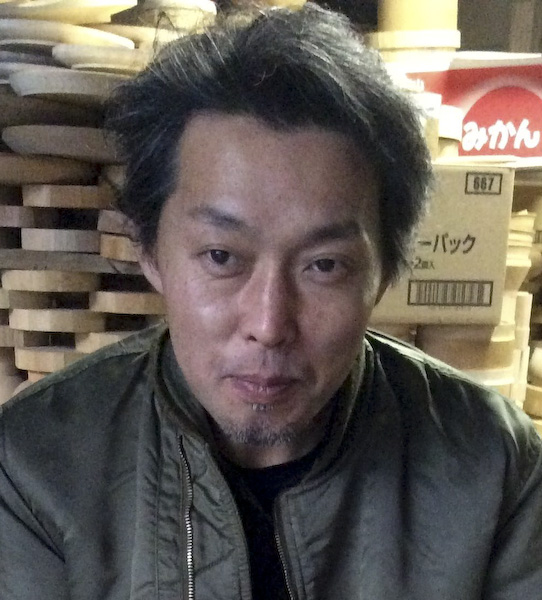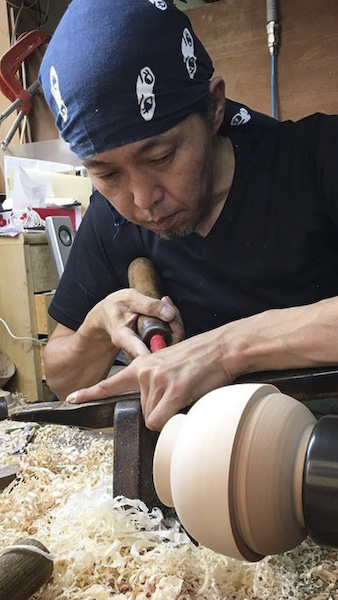Takehito Nakajima - Artist's Statement
I was born in Yamanaka, a part of Kaga City in Ishikawa Prefecture where a variety of traditional crafts are practiced. Yamanaka has been a major production centre for Japanese lacquerware for centuries. A woodturner in the traditional sense is an artisan who turns and chisels wood to produce a wood base for lacquerware. Yamanaka is home to many skillful woodturners who have honed their skills by learning from each other through amicable competition over the centuries. Woodturning in Yamanaka is characterized by its style of harnessing the beauty and strength of wood and ornamental turning in which fine grooves and patterns are made on the surface of the wood.

I apprenticed under my father and studied the art of wood, and have been working for twenty-five years as a artisan and artist specializing in turned-wood objects. I am pursuing the idea of creating turned wood objects suitable for contemporary lifestyles using traditional techniques fostered in. It has led me to create one-of-a-kind design-oriented pieces in addition to producing old standards such as soup bowls. My strength is in creating fine shapes and colours. The colours of my turned objects are derived from the shapes that I create and not by adding red or black pigments. Wood has vessels and tracheids, which are the tiny tubes that conduct water and nutrients in the tree. The amount of lacquer that penetrates each vessel and tracheid differs according to how they’ve been cut; i.e., the angle of the curve that is created by turning defines the colours that are created. It is my creative strength to create colours by turning and finishing only with raw lacquer. This technique is called fuki urushi, which is the ultimate way to capture the beauty of wood grain. I pursue hues that emerge from the process of ‘returning lacquer that is derived from a tree back into a tree’.

Each tree has a different nature, which affects how I turn the wood from it. I enjoy the thrill of negotiating with the wood, altering the width and curvature to achieve my image of the final product.
Among many types of expression, I often make small sake cups – sakazuki. There is a sake brewery in Yamanaka that was founded 240 years ago. The owner of the brewery is an old classmate of mine, and he has been helping me to research shapes of sakazuki to determine how the fragrance and taste changes with the different designs.
Through a continuous process of trial and error, I endeavour to create beautiful vessels with simplicity and functionality by capturing the nature and beauty of wood grain.